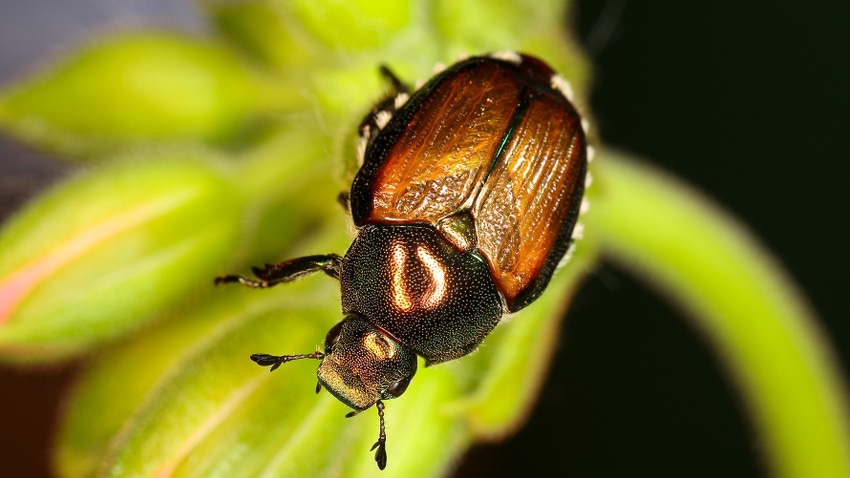November 13, 2023

A pest program in Washington state reports the first major decline in Propillia japonica numbers, but the insects were trapped over a wider distribution area.
The pest, also known as the Japanese beetle, was first detected in Grandview and Sunnyside in central Washington in 2020, when just two beetles were caught. The insects feed on over 300 different types of crops, but are a particular menace for the region’s grape and hop growers, the State Department of Agriculture explains.
Mass trapping helped keep the numbers steady at around 24,000 beetles in 2021 and 2022. WSDA was first able to conduct Japanese beetle treatments in 2022. However, the effects of treatments are not seen until the following year, thus WSDA saw the first decline in Japanese beetle catches this year with a total of 19,655 trapped.
WSDA conducted another treatment for Japanese beetle this spring and hopes to see a further decline in beetle numbers next year, officials said.
Despite increased trapping, continued treatment, and declining overall total beetles, the beetles are being detected further from the “hot spot” in Grandview and in higher numbers. In Wapato, which saw just over 100 beetles in 2022, WSDA trapped more than 1,000 beetles this year. An increasing number of beetles were caught in Sunnyside and Mabton as well as on agricultural land in the area. Five beetles were caught as far away as Pasco.
With the second year of treatment under its belt, a trend of about half of the proposed treatment areas are allowing WSDA to treat their properties for the beetle.
“The community is the solution,” said Sean Spichiger, WSDA’s pest program manager. “We can eradicate this beetle, but only if we all work together.”
Officials warn that if the beetles permanently establish in the state, it will result in costly quarantines and limit the ability of growers to move products from the area. Additionally, both homeowners and farmers will be left to pay for managing the beetles on their property.
This fall and winter, WSDA will look at expanding both the quarantine area and the number of target treatment properties, agency officials said.
"Our window for being able to eradicate this pest is closing,” Spichiger said.
Visit agr.wa.gov/beetles.
Source: Washington State Department of Agriculture
About the Author(s)
You May Also Like






